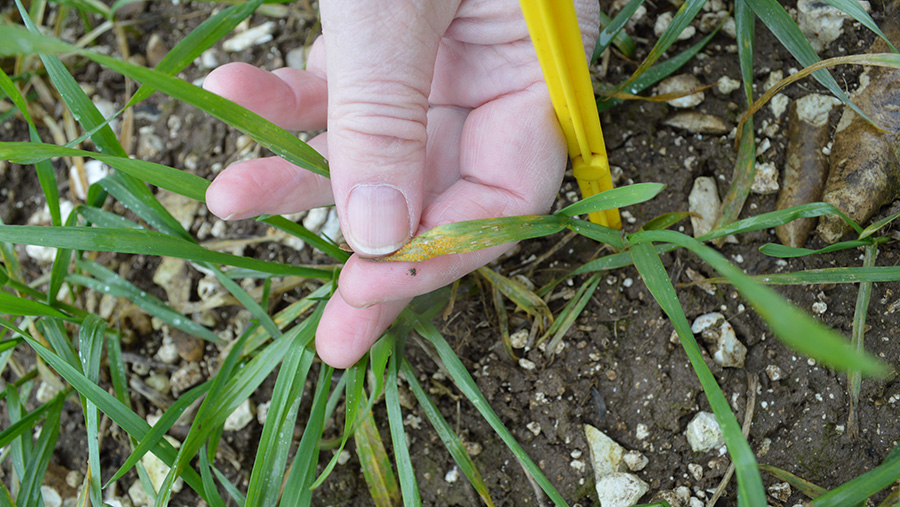Yellow rust concern as some wheat varieties show weaknesses
 free PR pic
free PR pic Some wheat varieties are becoming more susceptible to yellow rust than official data suggests as the disease spreads outside its traditional eastern England hotspots.
Experts believe races of the disease may be adapting rather than a new race emerging as more disease is being seen in Yorkshire and into Scotland, and also into west and southwestern England.
Learn more: Take the Farmers Weekly Yellow Rust Academy
Growers are being advised to be on the alert for the disease next season, pick varieties with the best possible resistance and be prepared to treat crops with fungicides.
“This season we have seen more yellow rust on varieties with a 7 or 8 score for resistance, which are usually pretty good.
“This could suggest they may be a point or two too high,” says independent plant pathologist Rosemary Bayles.
In the AHDB Recommended List, winter wheat varieties are rated on a 1 to 9 score with varieties such as Trinity, Crusoe, Revelation and Evolution rated the highest resistance score of 9, while others such as Solstice, Viscount and Kielder are on a lowly 4.
Experts suggest there is a general erosion of resistance to yellow rust accompanied by a change in the balance of existing rust races.
This is resulting in yellow rust being seen outside the traditional hotspots of Essex, Cambridgeshire and up to the Wash, with a lot more seen in Scotland, and into western areas.
Dr Bayles says that wheat varieties with a resistance of 4 may not merit such as score and could be rated even lower.
Colin Patrick, seed trials manager at distributor Agrii, has seen yellow rust moving into varieties he had not expected this season and into new areas.
“We are seeing yellow rust in varieties we had not expected and into area where we have not seen widespread disease before,” he says.
Mr Patrick adds that some highly resistance varieties have held up well but others with a solid 9 could really fall to 8, and the relatively large number of varieties with a score of 8 now look like being between a 5 and 7.
In eastern England, his work suggests noticeable changes in susceptibility in Cordiale derivatives based on the Yr7 resistance gene, and in Scotland varieties based in Claire and Alchemy are taking more yellow rust than in the past.
Mr Patrick advises growers to be extra vigilant in the coming season and suggests the following:
- Select varieties with strong resistance ratings based on the most recent season
- Treat seed of varieties with questionable resistance with fluquinconazole seed treatments
- Monitor yellow rust levels carefully in all varieties, including spring wheats
- Employ a yellow rust-active T0 spray where early spring levels are high
- Include an extra strobilurin fungicide in the main spray programme if yellow rust become evident

